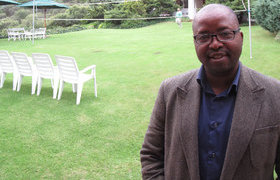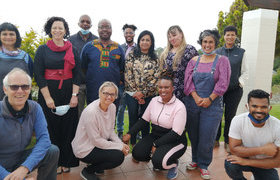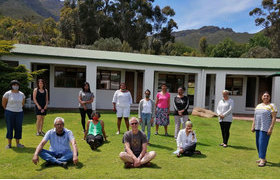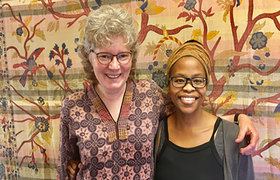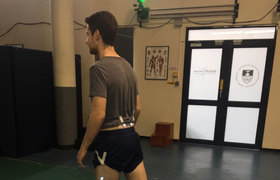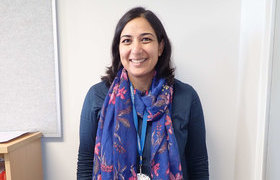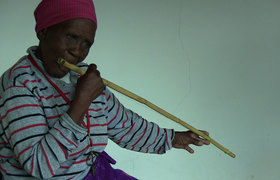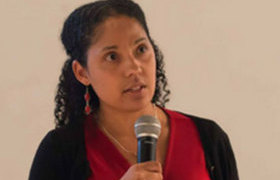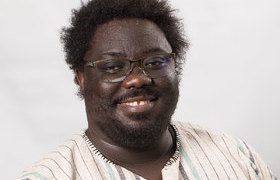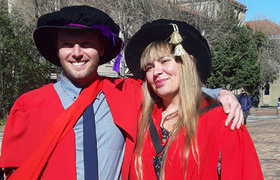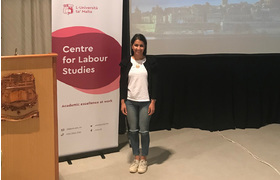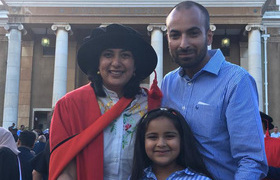Professors are made by hard work
14 July 2016 | Opinion Rob Morrell.
Open processes are to replace patronage and will help to build a representative professoriate
For most academics becoming a full professor is a career pinnacle, the reward for many years of dedicated work and intellectual creativity. It is public recognition of achievement and it carries with it considerable status.
Professors are a source of fascination and admiration. They stalk the pages of history. There is real mystique about, for example, the Oxford don or the Ivy League professor.
Professors are supposed to be very clever, learned and worldly. It is possibly for this reason that they feature as the butt of novels in which writers such as David Lodge and Malcolm Bradbury poke fun at them and reveal them to be the flawed mortals that they obviously are.
If professors are flawed human beings, this does not detract from the labour they put into becoming professors. Among the novels that capture the travails is John Williams' fine book, Stoner. First published in 1965 and released again in 2014, it describes the battle to transcend poverty and become a professor, the struggle to finish a PhD, the departmental battles, the staking of intellectual turf, the need to work hard, to persist, to learn the ropes. Here the romance of the professor is stripped away.
In Chabani Manganyi's recent memoir, Apartheid and the Making of a Black Psychologist, we have a local account of the road to professorship, one starting from very humble origins, facing poverty and prejudice, encountering some luck, receiving family and mentor support, but most of all testifying to dogged determination and a love of learning.
Chabani became a full professor at the University of Transkei in the late 1970s before going on to greater things at Wits, and becoming vicechancellor at the former University of the North (now University of Limpopo).
Are professors made or born? The astonishing history of JH Hofmeyr is arguably of a professor born. Born in Cape Town in 1894, he matriculated at the age of 12, had a master's degree by the age of 17 and was a professor by 23. His intellect was undeniable. But most professors are made, or make themselves. The routes they travel are many and tortuous, mostly achieved after decades of effort and invariably in the face of obstacles.
When one starts work at a university, one generally starts on the bottom rung, as junior lecturer. This position has gradually been phased out because the salary attached to such a junior position is not competitive. Salaries at universities are generally lower than in the commercial world and many would-be academics with competitive university qualifications would be able to command much higher salaries outside universities.
Assuming that one starts an academic career as a lecturer (though many who study full-time until they complete a PhD start at the senior lecturer level), one sees a road stretching ahead that includes a stop at the senior lecturer level, then another at the associate professor level and then, finally, reaching the full professor terminus.
In some universities the position of senior professor has been introduced to try to extend the salary scale and ensure that universities are competitive for high-end skills.
In the 1980s, it was assumed that after a life of work as a university academic, where one's achievements were modest rather than stellar, then one could reasonably expect to be a senior lecturer. This was called the career grade. This was a reminder that not all paths finished at the full professor terminus and also served as an inducement for staff to aspire to greater things.
Increasing competition between universities means that an academic might best be able to forward her or his career by seeking a post at a higher level at another university.
There has thus been inflation in academic posts and the assumption now is that one will at least reach the level of associate professor. Globally, however, promotion is secured by achievement and labour and in a globally competitive environment this results in demanding work regimes and long, long hours.
The demography of the professoriate is always a source of academic interest. Historically, many more men have been professors than have women. The same is true for minority populations. It is not just a matter of demography; the speed of an academic's rise is often scrutinised because rapid progress provokes suspicion of favouritism.
In many parts of the world, policies have been developed to redress inequalities, often to ensure that women, minority populations and under-represented groups are better represented.
Your head of department belongs to the same clan as you do; you get promoted, your colleague doesn't.
These rely for their success in accurately identifying the causes of under-representation. A common explanation is that networks and patronage skew promotion trajectories. Your head of department likes you and doesn't like your colleague. You get promoted and she doesn't. Your head of department belongs to the same clan as you do; you get promoted, your colleague doesn't.
But this can amount to a conspiracy theory and many other factors may be at play. These include phenomenal academic productivity, outstanding performance, taking leadership positions and success with students.
One way of approaching redress is to ensure that promotion processes and criteria are clear. These regulate the process, ensure transparency and fairness. At most universities promotion involves having to meet criteria in three or four areas: research and publication, teaching and learning, administration, management and leadership, and a fourth area, social responsiveness.
Some universities allocate numerical scores for each area and a total score is stipulated for successful promotion. Within each area of performance, specific achievements are generally identified and these ensure some transparency and fairness in the process.
Staff members invariably compare their own performance with that of others who are at a higher level and are satisfied if they think that those senior to them have been more successful and, conversely, are dissatisfied if they believe that the staff member above them has not deserved a promotion.
In all areas of promotion assessment there is a tension between quantitative and qualitative indicators. To try to avoid charges of subjectivity, processes often seek objective measures.
In research, for example, one can count the number of publications (a crude measure) or refer to citation counts (which measure the effect of research). Although these provide a comparative basis to judge one candidate's performance against another, matters are complicated, for example, by differences between disciplines.
In some it is normal to publish just one article a year, whereas in others five a year will be normal. In effect, this means promotion decisions require a careful assessment of the quantitative and the qualitative elements.
Such assessment will require the application of the stated criteria to a candidate's portfolio; a balancing of, for example, excellence in one area against average performance in another, and then an attempt to come up with a global conclusion.
Debating a promotion frequently results in disagreements between members of promotions committees. Debate and disagreement are, in fact, important parts of the promotion process, because they indicate the presence of administrative rigour and act as a barrier to arbitrary decisions and to external intervention that can undermine or skew the process.
Promotions in the past were often poorly understood and quite secretive processes. They were rightly suspected of nepotism, the influence of old boys' clubs and racist and sexist bias. The increasingly transparent climate demanded in universities is testimony to progress in opening up processes and making them transparent.
Professors are made rather than born. But, as Professor Bongani Mayosi, dean-elect of health sciences at the University of Cape Town, puts it: “Talent, fortunately, is evenly distributed.” The challenge is then to ensure that “talent meets opportunity so that it can flourish”.
This will ensure that academics from under-represented groups are given at least the same opportunities to meet the performance criteria required for promotion.
To assist with transforming South Africa's professoriate to reflect its population as fully as possible, one has to take account of the processes that have been put in place to ensure fairness and transparency.
These processes are the guarantors of legitimacy. These processes will ensure that professors are accorded respect because of their achievements and knowledge.
It is precisely because new processes have been developed to ensure (or seek to ensure) no short cuts and patronage that the work to transform the demographics of the professoriate will not be rapid. Professors are not simply declared; they have to earn their stripes and be seen to earn their stripes.
Opinion Director of the Next Generation Professoriate Robert Morrell. Originally published in the Mail & Guardian. Image Creative commons.
Read related stories:
- New professors share journeys and reflections
Released: 28 June 2016 - Fast-tracking professors is key to transformation
Published: 26 April 2016
 This work is licensed under a Creative Commons Attribution-NoDerivatives 4.0 International License.
This work is licensed under a Creative Commons Attribution-NoDerivatives 4.0 International License.
Please view the republishing articles page for more information.
Next Generation Professoriate (NGP)
The Next Generation Professoriate (NGP) is a mid-career academic staff development and support programme. Funded by the vice-chancellor’s Strategic Funds, the NGP addresses demographic inequalities in the academic hierarchy. The goal is to help members become associate and full professors.
The NGP was officially launched in September 2015. By the end of 2018, four of its members had been promoted to full professor and a further 14 had reached the rank of associate professor.
The programme is led by Dr Robert Morrell, who has over 35 years of academic experience in South African universities. He has a B1-rating from the the National Research Foundation (NRF) and is an elected member of the Academy of Sciences in South Africa.
Newsletters
In the news

